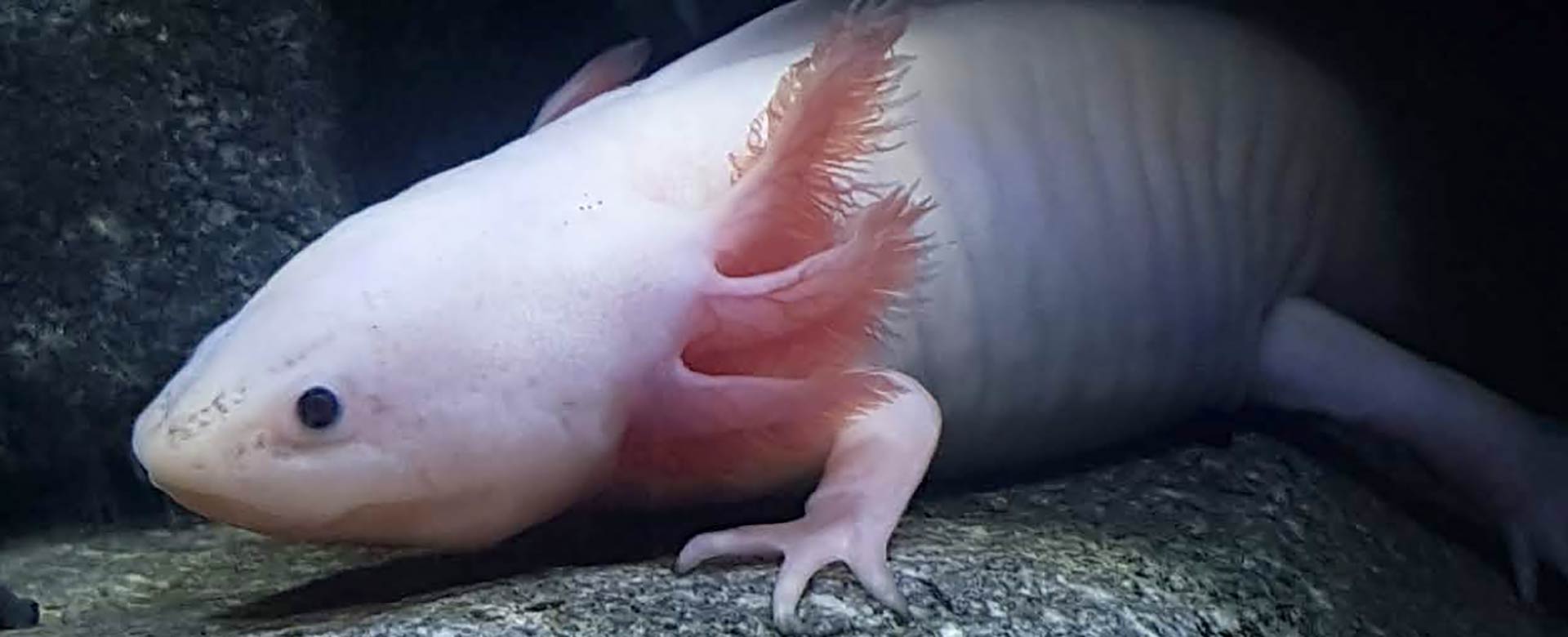Do you believe in monsters? Monsters under the bed, monsters from your favorite movies, monsters from your nightmares? Have you ever heard of a “Water Monster?” Believe it or not, there is such a thing, and it is very real. A mysterious creature, that lives under the water, never comes up to breathe air, has slimy skin, eats anything that fits into its mouth, and hides in the darkness exists in the murky, swampy waters of the Xochimilco canal system in Mexico. And it is extremely rare. This animal has amazing magical abilities, such as shape-shifting from a worm-like baby to a lizard-like adult. It can also regrow its limbs, organs, and other body parts if they become lost or damaged. We call this animal the Axolotl.
Some may think it is a monster, but others know it as an amazing and beloved species of endangered aquatic salamander. Lately, and unfortunately, if we are not careful, history will remember the Axolotl not only for its amazing abilities but for its disappearing act.
An Introduction to the Axolotl
The Axolotl (Spanish Ajolote) is known by many names; their scientific name is Ambystoma mexicanum (meaning “Mexican Glutton”), and they are also known as the Mexican Walking Fish, Mexican Salamander, and Water Monster to name a few. Simply put, they are an amphibian (related to frogs and toads) who never fully develops into an “adult.”
Most amphibians come from eggs, and all amphibians begin their life in the water. Some amphibians, (such as bullfrogs) hatch from eggs into tadpoles, then mature into a pollywog, and eventually grow legs, lose their tail, and metamorphosize into a fully developed adult, which can still swim, but then breathes with lungs and can move around on land if it desires. In fact, the word “Amphibian” comes from the Greek word for “double life.” The Axolotl is very different because it stays underwater for its entire life, keeps gills for breathing, and never loses its paddle-like tail. They are truly the “Peter Pan” of Salamanders; they never grow up. Though this is true, they do have the ability to become mature enough to reproduce once they reach a certain age.
An Endangered Species
These amazing and unique Amphibians are unfortunately classified as critically endangered and are disappearing from earth at a rapid rate. Their only habitat is a very small canal system, just outside of Mexico City. This is their main challenge since they do not have anywhere else in the world that they naturally live. The area is now under protection, but time may have run out to make enough impact on native populations.
Humans are almost entirely the cause of the threats that plague the Axolotl. These threats include hunting and eating of the Axolotl, rapid human invasion, habitat loss and destruction, chemical and plastic pollution, and the release of non-native animals into their waters (such as carp—a type of fish that eats the Axolotls as well as their food sources.) At this point, the primary method used to save this species is to keep and breed them in the care of humans, and to protect their natural environment, with the hopes of re-releasing some of them back into the wild. Axolotls live and breed fairly well in captivity, so there is hope, though it may be a slow, painstaking process.
Our Relationship with the Axolotl
So why should we care, and how can we help? Amphibians, such as the Axolotl, other Salamanders, Frogs, and Toads are very important to the natural environment. Amphibians are Indicator Species, meaning they are some of the first animals to show us signs of an unhealthy ecosystem. For example, since they have very sensitive and absorbent skin, Axolotl are affected by toxins, diseases, or impurities before many other animals show any signs of becoming sick. They can, (and have) warned us of danger before we become sick too. If we lose animals like this, which ones will warn us after the fact?
We know the loss of any species can greatly affect the environment around them. Another positive impact they have on the world is their consumption of insects, including mosquitoes, which can make us ill. So, to put it lightly, we need Amphibians more than we realize. Simple everyday choices that can help save them are habits such as being careful where we dispose of chemical or plastic waste, using fewer plastics, recycling and trying to avoid hitting toads and frogs with our vehicles who may be crossing the road. Most importantly, we need to conserve water when possible and keep our rivers, lakes, and ponds as clean as possible. Water, after all, supports all life on earth, (even us) not just the amazing (but disappearing) Water Monster.








